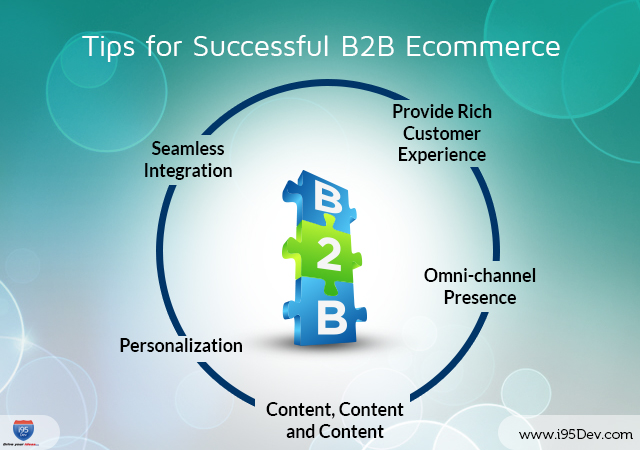How e-commerce is enabling the F&B
industry survive the COVID-19 pandemic

Whether you create a new B2B store online or modify the one you already have, you need to know the following key factors to be successful online:
Provide Rich Customer Experience
Like B2C, fundamental features such as appealing layout, functional navigation and robust site search are equally important in B2B. And with increasing demand of business buyers, features like one page check-out, multiple freight options and payment gateways are up on the cards. However, certain features that uniquely boost online B2B sales include:
- Price Levels: This allows B2B organizations to sell products at different prices based on the customer group.
- Sales quote: This feature helps to create and manage customer quotations or RFQs online with real-time information on products, inventory, price, etc.
- Salesperson: This feature offers you the flexibility to assign a specific sales or customer representative to your customer; these reps can thereafter help the customer with necessary information both online and offline.
- Frequent order: Since business buyers frequently reorder the same items, this feature helps them to reuse the list last created without wasting time in redoing things.
- National Accounts: This feature helps you to define a customer as a “parent” with “child” customers added to it; such that a payment received from the parent company can be applied across any of the child customers’ payments. Credit documents can also be reassigned in between any member within the national account.
- Credit Limits: The credit limit feature which allows you to define credit limit for each customer determines the maximum level of purchases a customer can make on credit.
Online B2B helps Wholesalers, Distributors and Manufacturers in many ways. To know more, read our eBook Why Ecommerce for Wholesalers, Distributors and Manufacturers?
Omni-channel presence
Ecommerce is getting competitive and customers today are more tech-savvy. They expect you to be present across multiple channels and provide the same experience across each one of them. To provide them the Omni-channel experience businesses require seamless integration between all these disconnected channels. This integration enables businesses to provide their customers a seamless shopping experience and build deeper engagement with them.
Content, Content and Content
Ecommerce has evolved with the rest of the web with content being equally important for both. But, over the years, the format in which the content is consumed has changed. Today content is no longer restricted to text but extends to formats like images, videos, detailed product descriptions as pdf, etc. The more information you provide, the more you engage your customers by helping them understand what they are ordering online. Buyers expect an easy-to-use, highly informative, and visually appealing experience where it is easy to find what they need and make purchases.
Personalization
Personalization is one of the key attributes for building engaging and cost-effective user experiences on your ecommerce store. The more information you gather and use about your customers, the better your store can be personalized to meet specific customer needs. Personalized features like product recommendations, best-seller lists and wish-listing save time of the B2B buyers and improves buyer-seller relationships. It is a powerful tool that helps online businesses build better, long-term customer relationships, improve shopper’s experience, and improve sales conversions.
Seamless integration
Not all business processes are designed for customer satisfaction. Isolated set-ups and system specific business processes upsets the balance of a healthy business ecosystem. Imagine a situation when your customer orders a product in your website and you find the product out of stock in your back end system. Such a situation can be the result of a manual error or the inability to put up real time information across systems. Integration enables items, inventory, orders, customers and other pertinent sales data to pass between independent systems to communicate with each other. A seamless integration between your ecommerce frontend with your ERP, CRM, etc. helps to saves your time and effort and assists in achieving business objectives.
To know more on ERP-ecommerce integration, read our eBook Reasons for ERP & Ecommerce integration



